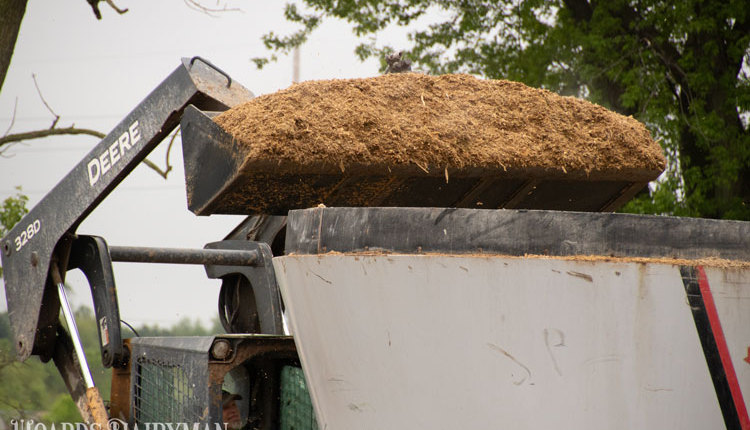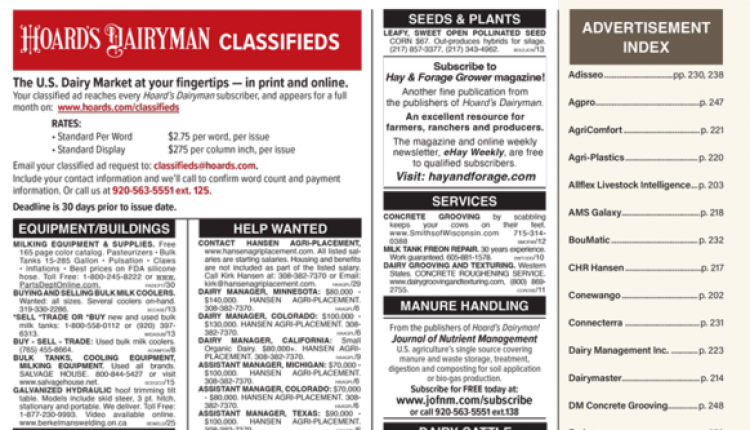
Domino's helped move an additional 6.6 billion pounds of milk in the pizza category since 2009 due to innovation and a strategic partnership with the Dairy Checkoff. At the meeting DMI's CEO Tom Gallagher, Domino's CEO Patrick Doyle and Quaker Foods' President Jose Luis Prado discussed how dairy fits into the future of their brands.
Over 1,000 people gathered in Florida in late October for the joint annual meeting of the National Dairy Promotion and Research Board, the United Dairy Industry Association and the National Milk Producers Federation. This marked the 16th year these three organizations focused on either dairy promotion or policy met at the same venue.
In recent months, the Dairy Checkoff gave fluid milk renewed focus through $14 million in special initiatives. A three-prong effort funded proposals in these areas: lactose free, value added and core sales. As Tom Gallagher, CEO of Dairy Management, Inc., noted, "There is no silver bullet to fix this issue."
"The gallon jug, our best seller, doesn't work for those eating away from home," noted Gallagher who held up a jug of milk while speaking to convention goers. As he elaborated on the issue, he asked a quarter of the audience to stand and then explained to them that they represented meals eaten away from home prior to 1980. Next he directed another quarter of the audience to stand . . . "Half of our meals are eaten away from home today," he said, noting we have lacked innovation. "Competitors didn't take our fluid space - we let it go away," stated Gallagher.
During a panel discussion, "Can fluid milk be saved?" Select Milk Producers Cooperative CEO Mike McCloskey said, "There has been a dramatic shift in lifestyle which has affected fluid milk consumption." Fellow panelist, Darigold CEO Jim Wegner, agreed, "Our market is changing. In 1980, half the population was under 30. Now the 30-age category is only 40 percent."
"Others have decided to innovate and steal fluid milk's identity," added McCloskey. "Orange juice manufacturers adding calcium to fortify the product is just one example." In addition to those issues, a lack of branding and packaging innovation, more competition from other beverages and negative experiences with school milk are all reasons for the erosion in fluid milk sales.
"We have to make milk convenient," Wegner suggested to the audience. "The gallon jug doesn't always do that." Then he brought praise to another Pacific Northwest business, "Where would we be without Starbucks (in the fluid category)? Starbucks sells more milk than coffee," said Wegner who is based in Seattle, Wash.
As far as the future is concerned, "From an innovation standpoint, we need to reward creativity. We can't allow standards of identity to make wrong decisions in our innovation," said McCloskey as he went on to note that new fluid products geared towards America's aging population might not fit traditional Class I standards of identity. In addition, the industry would also have to resolve some classified pricing issues.
Domino's is leading innovation
While the fluid milk situation has caused the category to become a commodity, the same cannot be said for other market segments. Cheese sales are booming for a variety of reasons. One of them is a revitalized pizza category and a multi-year partnership between the Dairy Checkoff and Domino's which shows no signs of slowing.
"Since 2009, when we reinvigorated our pizza with more cheese, same store sales are up 13.9 percent," Domino's CEO Patrick Doyle told dairy producers. "That's tops among quick service restaurants (QSR). We have moved an additional 6.6 billion pounds of milk in the pizza category since 2009 thanks to innovation."
The second-largest pizza chain in America is not resting on its recent success. "We have launched a new handmade pan pizza that uses 40 percent more cheese than a regular medium pizza," said Doyle. "We also will be reinventing our stores through a retail transformation. These stores will include cold white and chocolate milk at the retail counter next to the checkout," explained Doyle.
Quaker Foods and Snacks President Jose Luis Prado was also a guest at the Florida meeting and discussed a relatively new partnership with the dairy-producer funded checkoff program. Together Prado and Gallagher discussed Quaker's "Make it with Milk" campaign.
"There are 9 billion meals of oatmeal consumed in the U.S. each year," said Gallagher, "less than 30 percent use milk with oatmeal. If we move the needle by 1 percent (people consuming milk instead of water in their oatmeal), there would be 30 million more pounds of milk consumed," said Gallagher.
Real Seal gets reinvigorated
Under a new five-year agreement with UDIA, the Real Seal will now be managed by the National Milk Producers Federation (NMPF). In order to use the Real Seal, products must be made with 100 percent U.S. cow's milk.
"The Real Seal gives us the opportunity to play some offense, by helping consumers distinguish between dairy products made from real milk, and those that are either imported or not made from milk at all," noted NMPF CEO Jerry Kozak. "We need to take care of our own real dairy, real American-made products."
The Real Seal still has market appeal, explained NMPF Chairman Randy Mooney. "According to research done by DMI, the Real Seal has 91 percent consumer awareness. And 78 percent of consumers are familiar enough to know what it stands for. What's more, 360 food companies are registered to use the Real Seal on more than 10,000 products," said Mooney.
Product promotion shared the stage with animal care. "We started the FARM (Farmers Assuring Responsible Management) program three years ago to provide consistent, national and verifiable means of showing the food value chain how dairy products are produced," said Kozak. "This allows us to see where we are as an industry and ask if we're using the best animal care practices possible."
"We've made continued refinements in the FARM program," said Mooney. "Participation has continued to grow, but it's not where it needs to be," he said. "The National Dairy Board recently decided to allocate some resources to help defray the cost of the third party verification process," he went on to say, noting that NMPF anticipates that audits in the FARM program will exceed 70 percent of the nation's milk supply in 2013.
During that discussion, Kozak highlighted the new "See it, Stop it" component of FARM which empowers the entire farm team to be vigilant about animal care. "The See it, Stop it' effort encourages workers to share information about what farm owners may need to know but can't always be around to see," said Kozak.
In an earlier session, NMPF's Jim Tillison discussed ongoing efforts in the Cooperatives Working Together (CWT) initiative where dairy cooperatives and individual producers voluntarily contribute 2 cents per hundredweight towards export efforts. All told, CWT is funded by 70 percent of the nation's milk.
"Work by FAPRI (Food and Agricultural Policy Research Institute) and Scott Brown shows that CWT added 43 cents per hundredweight to dairy producers' milk checks in 2012," said Tillison. "CWT helped export 60 percent of the U.S. production growth in 2012," he said, "that includes 17 percent of all cheese exports."
This article appears on page 743 of the November issue of Hoard's Dairyman.










